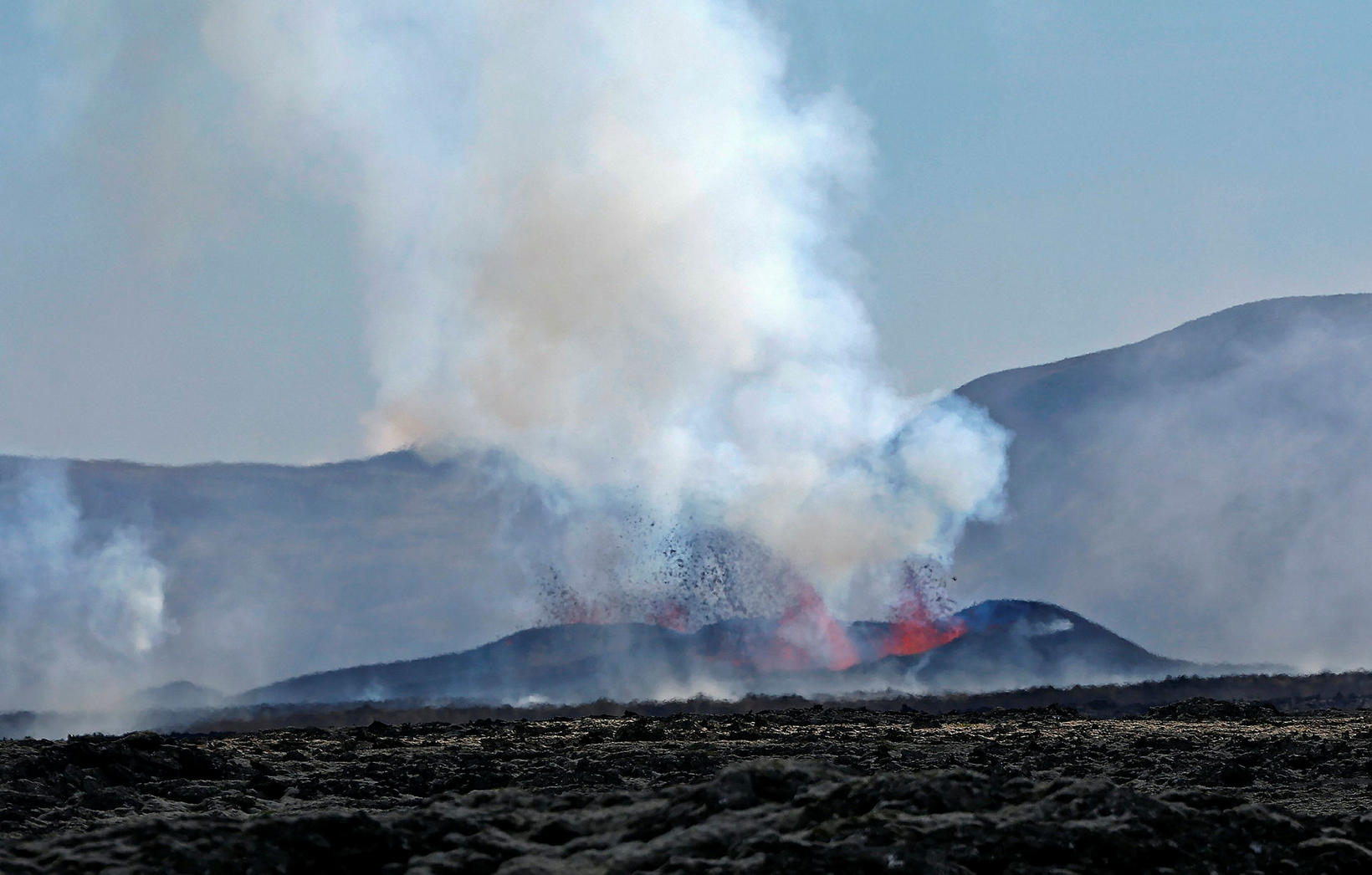Growing seismic activity raises likelihood of major eruption
More than three months have passed since the last eruption ended at the Sundhnúkagígar crater row. mbl.is/Eggert Jóhannesson
Seismic activity at the Sundhnúkagígar crater row is intensifying rapidly, and experts believe an eruption is imminent.
“It looks like it will culminate in a volcanic eruption,” says Benedikt Gunnar Ófeigsson, head of deformation measurements at the Icelandic Meteorological Office, in an interview with mbl.is.
The last eruption at Sundhnúkagígar—the seventh since December 2023—ended on December 9, meaning over three months have passed since volcanic activity ceased. This marks the longest period of magma accumulation in the current eruption cycle. As of today, it has been 113 days since the previous eruption began on November 20.
A bigger eruption on the horizon?
Ófeigsson predicts that an eruption could occur within weeks and warns that it might be larger than previous ones.
“The longer the interval between eruptions, the greater the likelihood of a major eruption. But it’s not guaranteed that it will be bigger,” he explains.
He adds that the inflow of magma has slowed, which has contributed to increased seismic activity.
Meanwhile, a strong earthquake swarm at Reykjanestá began early yesterday. When asked whether this activity is linked to the Sundhnúkagígar crater row, Ófeigsson says there may be a connection.
“There are regular swarms at Reykjanestá, and interaction between the two areas is possible. We’ve seen before that when expansion in Svartsengi exceeds previous limits, seismic activity across the Reykjanes Peninsula increases,” he notes.
However, he also points out that earthquake swarms in Reykjanestá are common, with five occurring in the same area since 2023.
Could this be the last eruption?
There is a possibility that the upcoming eruption at Sundhnúkagígar could be the last in this sequence.
“We can’t rule it out,” Ófeigsson says. “The magma inflow has slowed significantly, and it’s uncertain whether it will return to previous levels. We won’t know for sure until much later. We could be waiting for the next eruption—but it might never come.”
Despite this, predicting the future of volcanic activity in the region remains challenging. The inflow could pick up again, or unforeseen events could change the situation entirely.
For now, scientists continue to monitor the region closely as the threat of another eruption looms.


/frimg/1/55/41/1554131.jpg)








